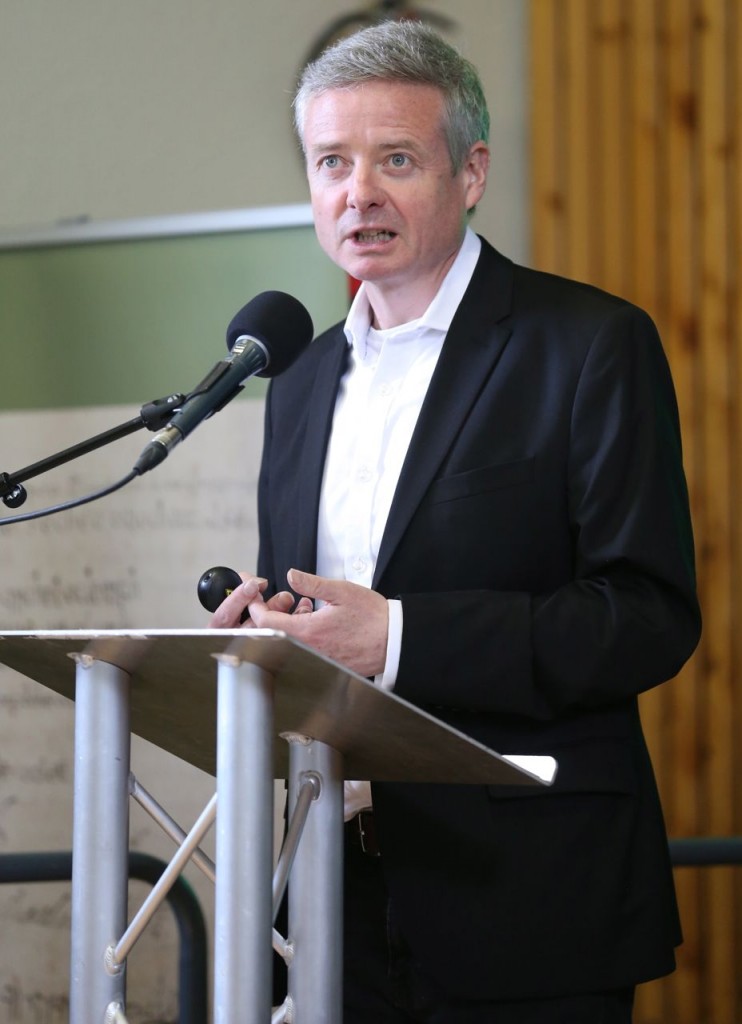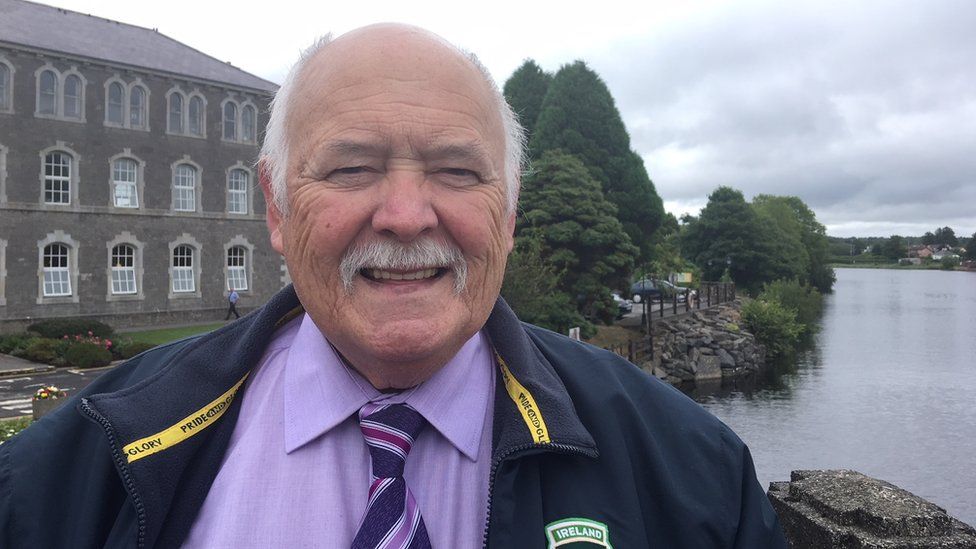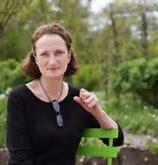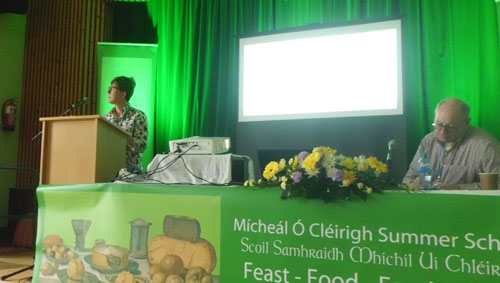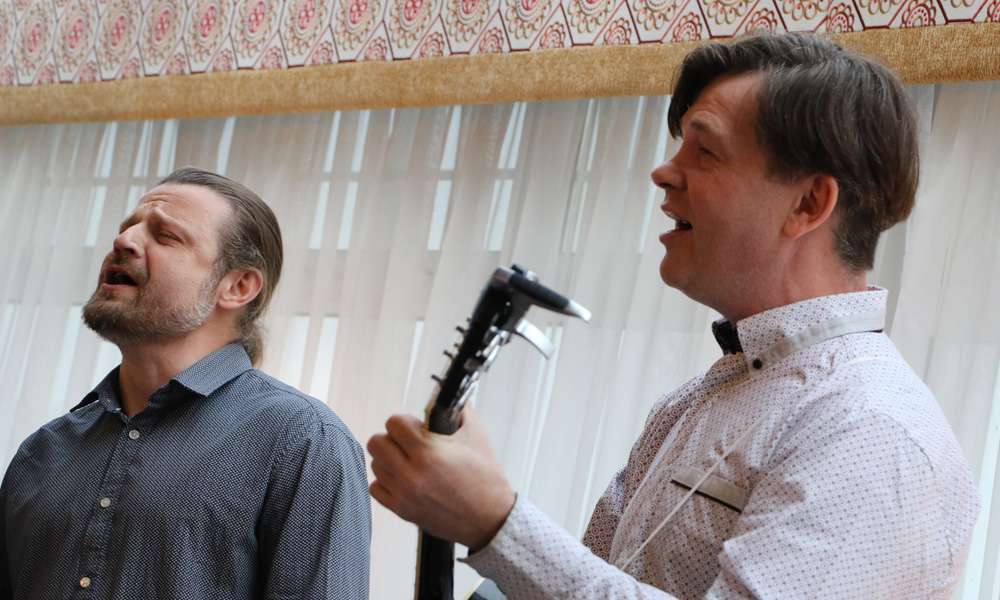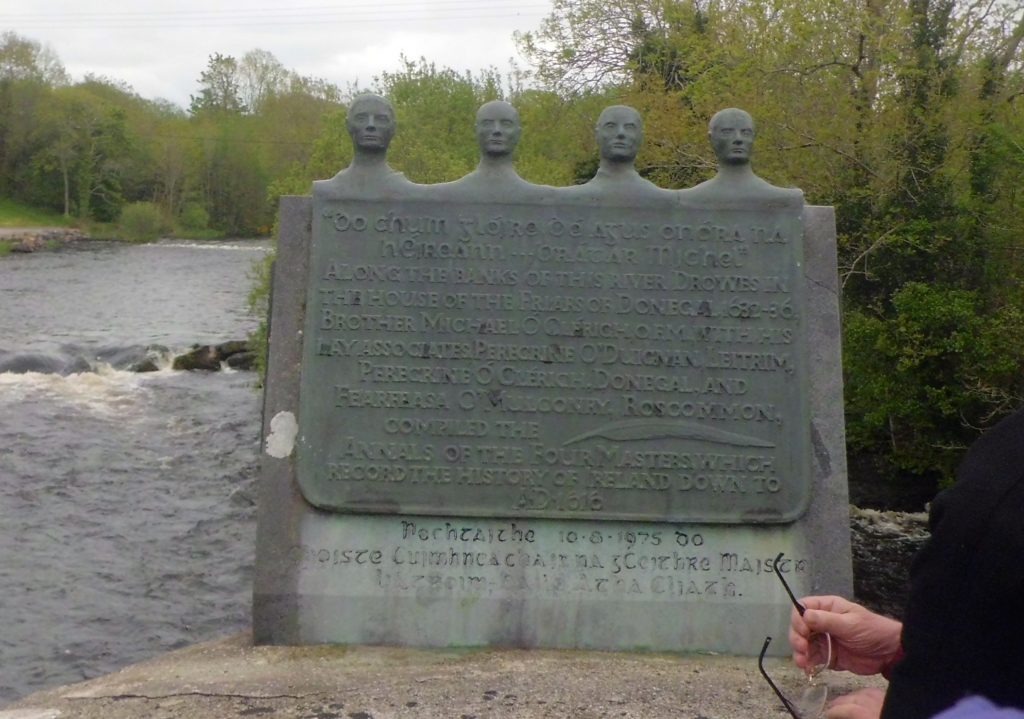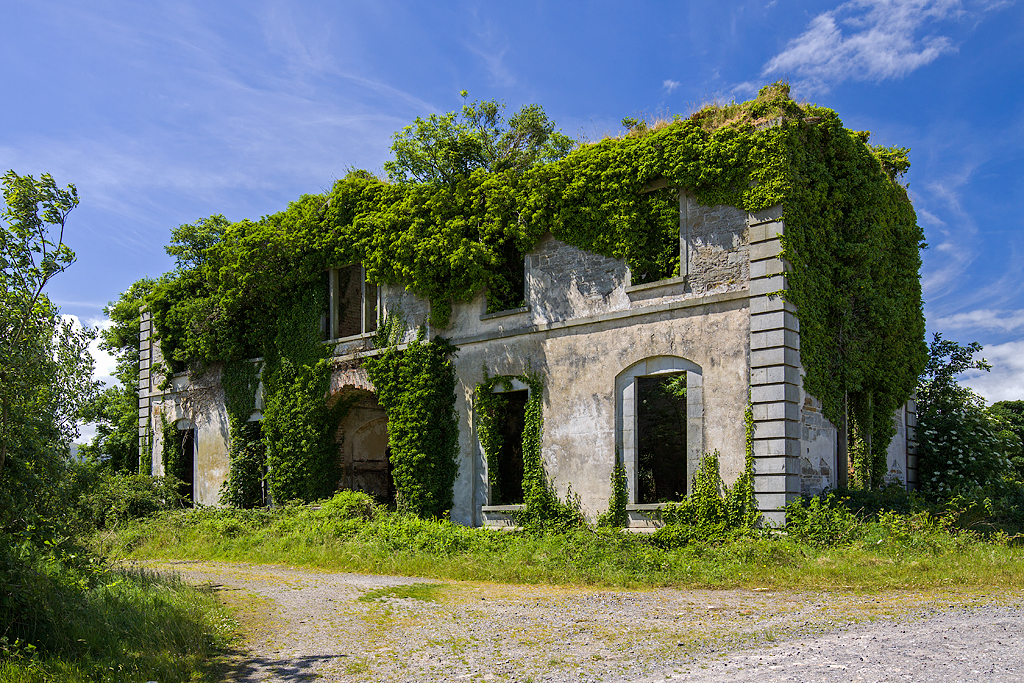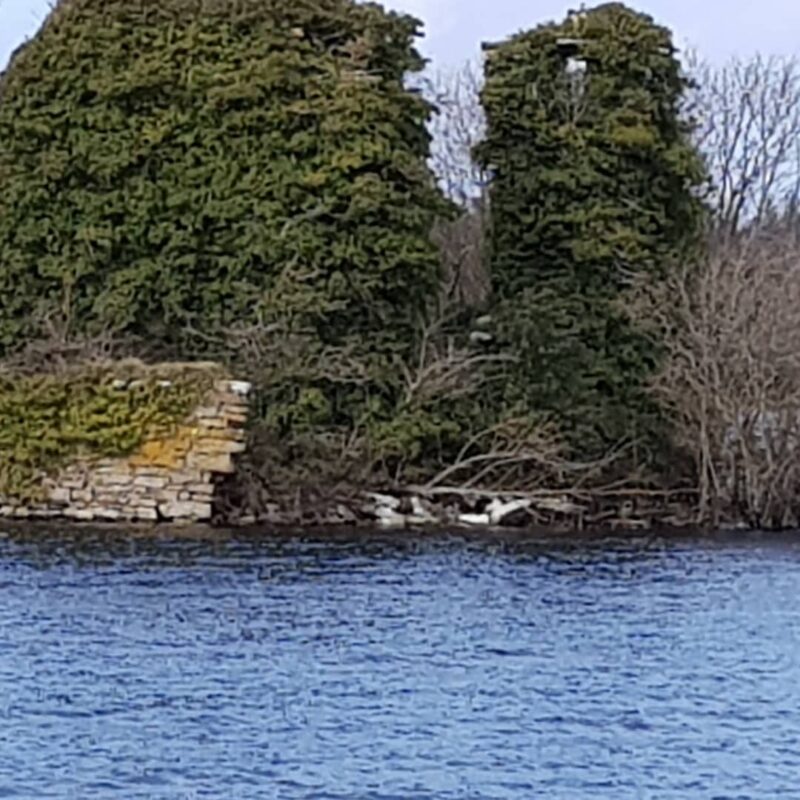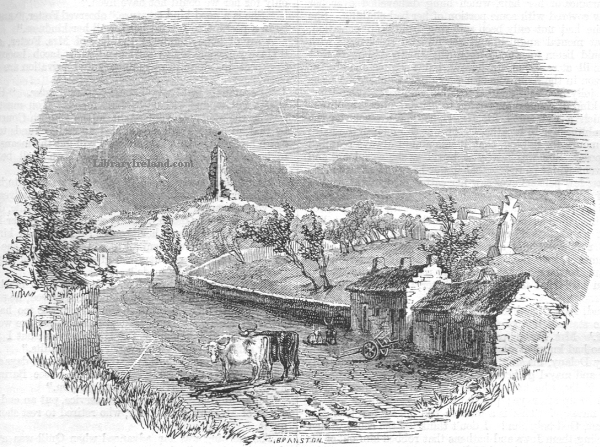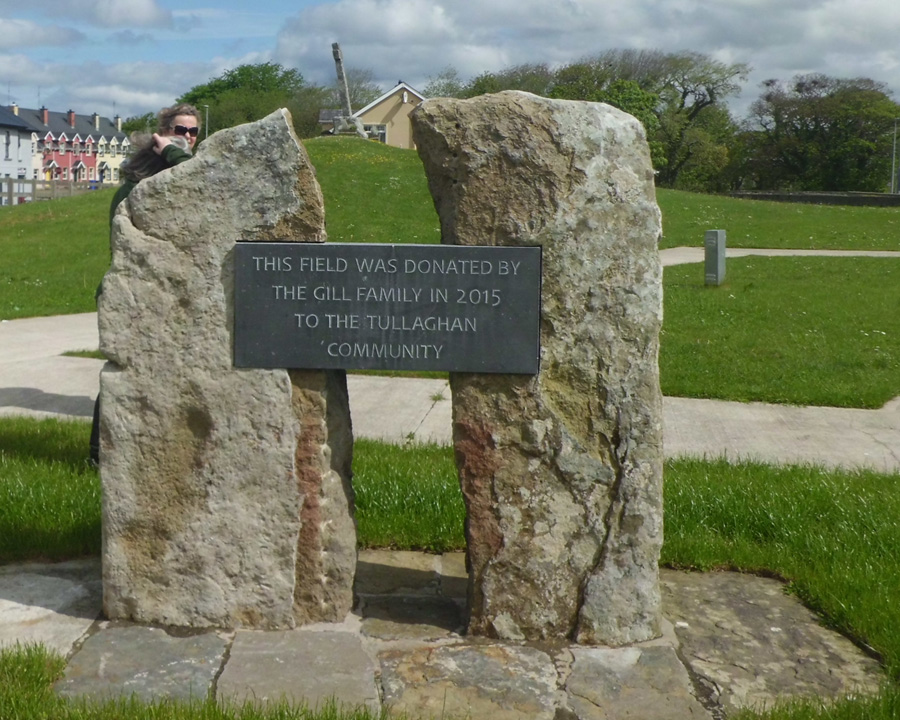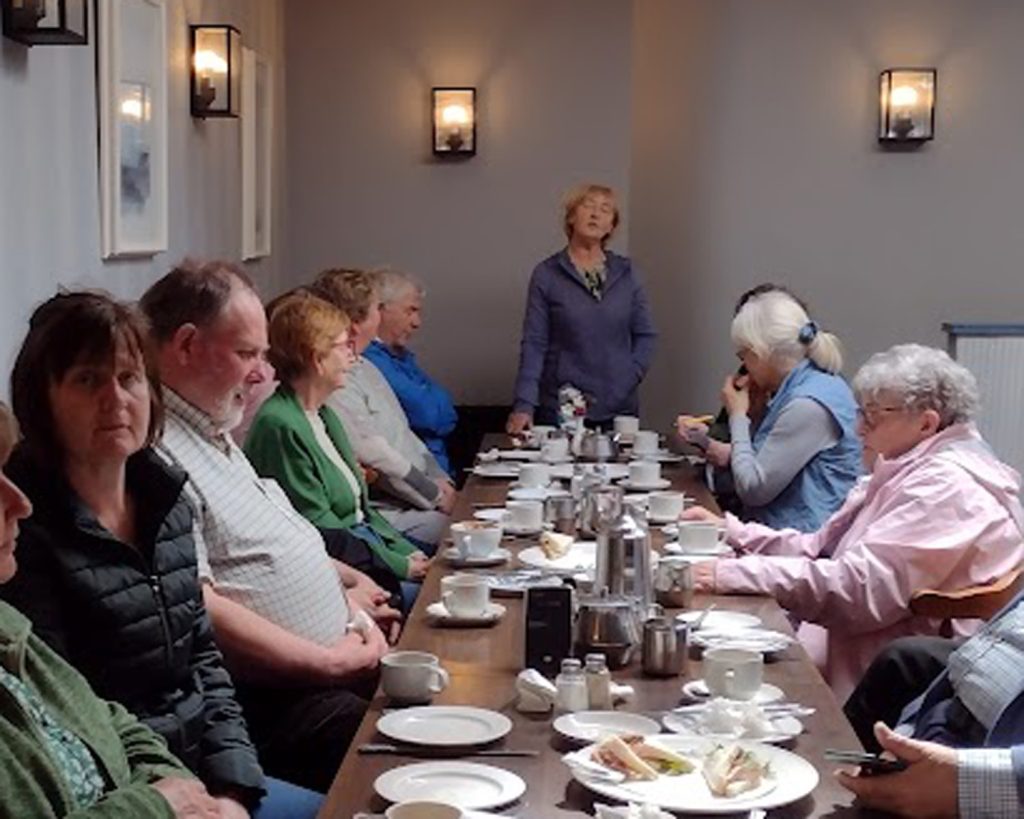2023 Summer School
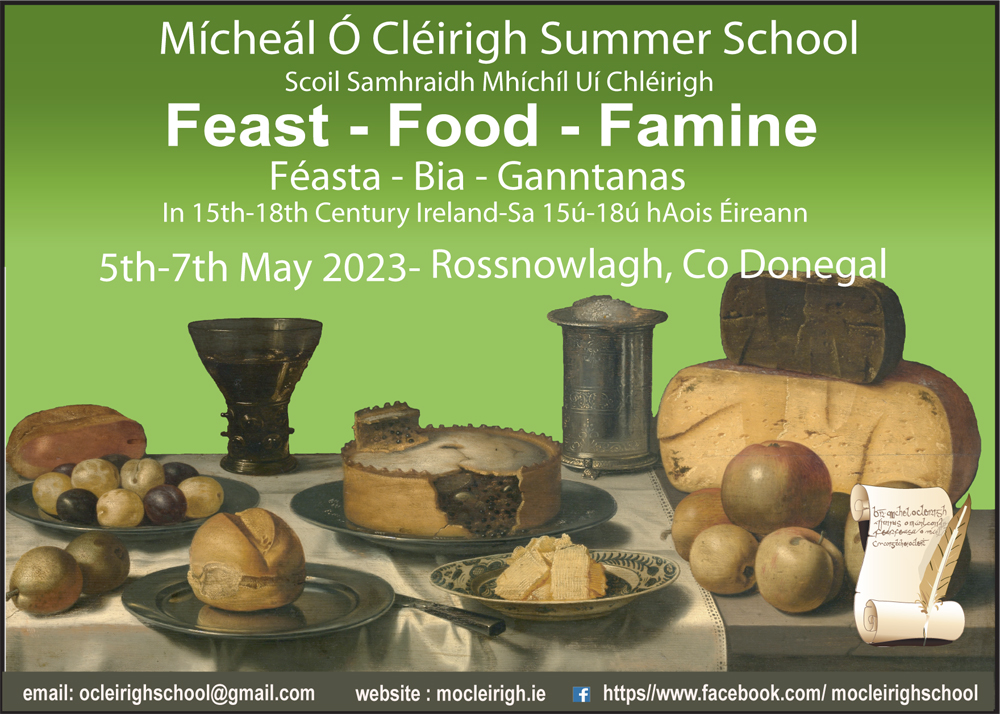
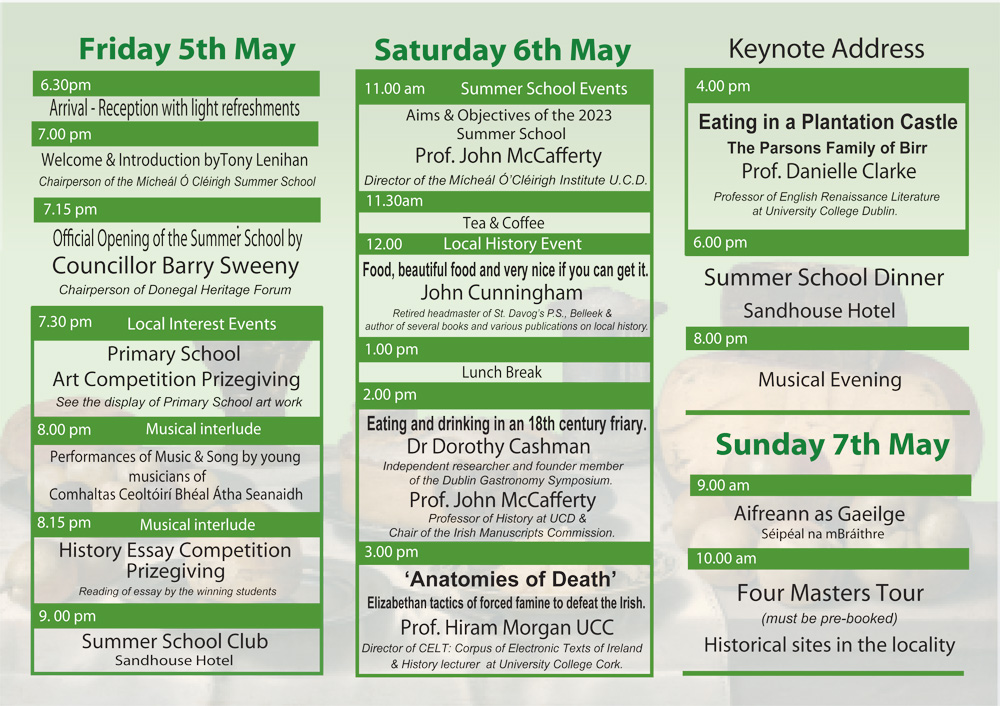

The 2023 Mícheál Ó Cléirigh Summer School took place from Friday 5th May until Sunday 7th May in the Friary Hall (situated at the back of the Friary) Rossnowlagh, Co. Donegal.
The theme of the 2023 Summer School was, “Feast- Food- Famine / Féasta – Bia- Ganntanas” and the various talks explored the hardships of day-to-day life in post medieval Ireland in the period from 1500 to 1800 where seasons good or bad could determine the life expectancy of men, women and children.
Friday 5th May
Opening of the 2023 Summer School
The young musicians of the Comhaltas Ceoltóri Béal Átha Seanaidh entertained the gathering people attending the first evening of the Summer School. The first evening of the weekend is our arts section and we encourage the younger generation in the performance arts through music and drawing and painting.
After opening remarks by the Chairperson of the Mícheál Ó Cléirigh Summer School , Tony Lenihan, the school was officially opened by Donegal Municipal Councillor Barry Sweeney, Chairperson of the Donegal Heritage Forum. Councillor Sweeney reminded those attending of the importance of local initiative in providing cultural events and the fact that we are only getting back to normal after the various lockdowns and isolating of the past few years. he wished the Summer School weekend well and hoped it would go from strength to strength.

Primary Schools Art Competition
Seen here admiring the winning Primary Schools’ artwork on display at the Summer School. This year eight local primary schools took part in the competition. These were Creevy, Kilbarron, Holy Family, Four Masters, St. Macartan’s, St. Ernan’s, Scoil Chaitríona & Rockfield National Schools.
There were four categories: Junior & Senior Infant;, First & Second Classes; Third & Fourth Classes and Fith & Sixth Classes
Saturday 6th May
Aims and Objectives of the 2023 Mícheál Ó Cleirigh Summer School
Professor John McCafferty
Professor John McCafferty, Head of the Mícheál Uí Cléirigh Institute UCD set out the aims and objectives of the 2023 Summer School.
He spoke of the fact that food is our basic need and it or the lack of it has driven major political upheavals through history from the barbarian hordes sacking Rome in the 5th Century to the French Revolution of the 18th Century, to the present day migration of people from Sub-Saharan Africa to Europe in the present time due to disaterous drought and war leading to the destuction of crops and livestock.
He was educated in UCD where he did VIIIb ‘pure’ History. Following the award of a First Class Honours degree, he embarked on an edition of the only surviving ecclesiastical 16th century ‘Act Book’ for Ireland. After that he spent some years in Cambridge first as a benefactor’s scholar and then as a fellow of St. John’s College. Speaking about his work he said,
“My research at the time was about the Church of Ireland in the 1630s. Since returning to UCD in the mid-1990s my work has increasingly focused on church history and the history of belief in Ireland in the period from 1500-1700. As Director of the Mícheál Ó Cléirigh Institute I work in a unique partnership with the Irish Franciscans whose transfer of manuscripts and rare books has been one of the most significant donations ever made to an Irish university. Since 2017 I have been Chair of the Irish Manuscripts Commission, a body founded in 1928. Its membership consists of academic historians, archivists and genealogists from the whole
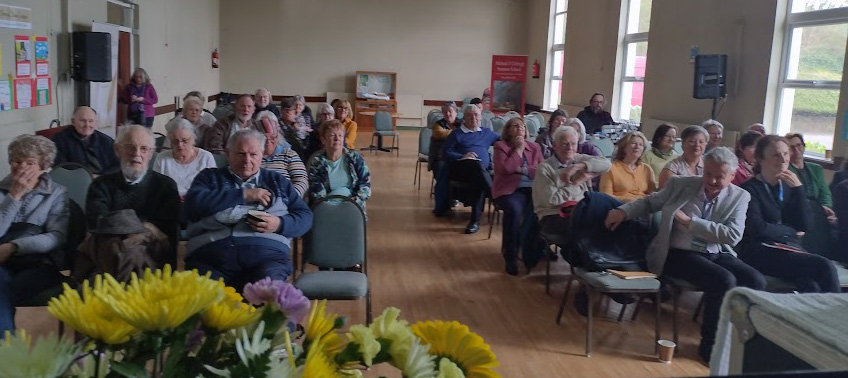
Audience Saturday
Food, beautiful food and very nice if you can get it.
John Cunningham
The first talk of the day set the scene by describing how people used the shellfish during times of want. A particularly poignnant point made by John Cunningham when he related the story of a woman from west Donegal, relating in a television interview, how people ate shellfish found on the seashore to suppliment their diets during times of famine. She was castigated by her neighbours for telling the outside world that the people survived eating “poor mans’ food” It seems that folk memory tries to forget such traumatic times by sometimes guilt as to why they survived wheras other family and friends did not.
John Cunningham was born in Ballyshannon, eldest son of Brian Cunningham N.T. a native of Donaghmoyne, Co., Monaghan and Mae Eves, Ederney. Attended Lettercran N.S., near Pettigo where he was taught by his father who was headmaster. Attended St. Michael’s College, Enniskillen and St. Joseph’s Training College, Belfast and became a school teacher. Retired as Headmaster of St. Davog’s P.S. Belleek in 1996 John has several published books including: In1980. Castle Caldwell and Its Families; in 1993. The Letters of John O’ Donovan from Fermanagh in 1834 (A unique glimpse into pre-Famine Ireland and in 2000. Monasteries and Early Church Sites of the River Erne (Over 1000 years of monastic and church history in Fermanagh, Cavan, Monaghan and Donegal.) Illustrated)

Eating and the Franciscan Life: friars and fish in 18th century Ireland
Dr Dorothy Cashman
Dr Dr Dorothy Cashman gave a talk on the diet of the Franciscans in the 17th Century. Dr. Cashman has extensively researched the culinary habits of the the Irish from Medieval times. Her works include ‘The dough must be neither dauked nor opened on the side as is the custom in Ireland’. » in Centre for the Study of Historic Irish Houses and Estates, Maynooth University ‘Indoors and Outdoors, Public and Private: Women 2015″ “That delicate sweetmeat, the Irish plum’. The culinary world of Maria Edgeworth” » in ‘Tickling the Palate’: Gastronomy in Irish Literature and Culture. Vol 57
Dorothy Cashman is an independent researcher in culinary history with a PhD from the Dublin Institute of Technology, now the Technological University of Dublin.
‘Anatomies of Death’
Elizabethan tactics of forced famine to defeat the Irish.
Professor Hiram Morgan
Professor Hiram Morgan was born in Belfast and studied at Our Lady’s and St Patrick’s College. Knock, Belfast and at St Catherine’s College Cambridge and now lectures at University College, Cork.
In his talk Hiram Morgan spoke about the Desmond Wars of the 1580s where famine became a consequence of the war whilst after 1598 and the replacement of the disgraced Earl of Essex by Charles Blount, Lord Mountjoy it became the policy to deliberatly destroy crops, cull livestock and kill men women and children Lord Mountjoy and his Lieutenants, Arthur Chicheste,r George Carew and Henry Dowcra destroyed as they progressed through Ulster. Famine followed weakening the resolve of the Gaelic lords to continue their efforts.
He held various research fellowships and posts from 1988 to 1996 and has been lecturing in history at UCC since 1996. He has authored Tyrone’s Rebellion, published by the Royal Historical Society (1993) and edited Political Ideology in Ireland (1999), Information and Media Through the Ages (2001) and the Battle of Kinsale (2004). He co-authored with John Barry Great Deeds in Ireland (2013 and worked with Dorothy Convery on Ireland 1518 (2015). He has contributed many peer-reviewed articles and was co-founder of History Ireland, Ireland’s popular history magazine. He has been a principal investigator on several local, national and international
projects and is currently head of CELT, the world’s largest website for Irish Studies which is hosted by the School of History at Cork.
Eating in a Plantation Castle
Professor Danielle Clarke
The culinary records maintained by members of the Parson family from the 1650s onwards has given a rare insight into the food eaten by the gentry of that time. In addition to food recipes there are hundreds of medical recipes using herbs and even recipes that have somewhat of a crossover with bread being used to make poultices for application to wounds and other injuries.
Professor Danielle Clarke, Professor at University College Dublin, School of English, Drama and Film, Dublin, Ireland was educated in London and Oxford before coming to UCD in 1994. Most of her publications deal with writing by early modern women, their engagement with mainstream literary culture in particular. Other areas in which she has published include sexuality, literary theory, translation in the Renaissance, and textual criticism. Professor Clarke is currently working on a number of projects – a monograph on Gender and Cultural Reproduction 1500-1700; work on Irish recipe books from the 17th and early 18th centuries. She is also the editor of the Oxford Handbook of Early Modern Women’s Writing.

Professors John McCafferty & Danielle Clarke in discussion with Tony Lenihan Chairperson of the 2023 Mícheál Ó Cléirigh Summer School
Summer School Dinner Sandhouse Hotel
After a very interesting morning and afternoon of talks many of the attendees came along to the nearby Sandhouse Hotel where they partook in a three course dinner and were entertained by a recently formed Ukrainian Choir of five members, refugees from the war in their country, who are being housed in La Verna, sited close to the Franciscan Friary in Rossnowlagh
Sunday 7th May
Four Masters tour of Local Historical sites
Four Masters Monument Mullinaleck Bridge
It was designed by Irish sculptor, James McKenna. He was born in Dublin on the 21st June 1933. Growing up in Co. Wicklow, James was educated at Kilcool National School, Bray Technical School and the National College of Art and Design, (now the NCAD) in Dublin from 1950 – 1955. He qualified with a Diploma in Sculpture and won a scholarship to Florence. He was responsible for many public art works including Couple at Ballyrahan Cross, 1798 bronze 1969, Famine Village 1998 and Warriors of Banba in 1999. He died in 2000.
The monument was commissioned by the Leitrim – Dublin Four Masters Memorial Committee and unveiled on 10th August 1975. The inscription reads
“Do chum glóireDé agus onóra nahÉreann…. Brátar Mícheál”
‘For the glory and honour of Ireland———– Br. Michael’
Along the banks of this River Drowse in the house of the friars of Donegal 1632-36 Brother Mícheáll Ó Cléirigh ofm with his lay associates Peregrine Ó Duignan, Leitrim, Peregrine Ó Cléirigh, Donegal and Fearfeasa Ó Mulconry, Roscommon compiled the Annals of the Four Masters. Whichrecords the history of Ireland down to AD 1616.
Nochtaithe 10-8-75 do Choiste cuimhneachain na gCeithre Maistri Laitriom – Baile Átha Cliath
Kinlough/ Ceann Locha
The village takes its name from the Irish word “Ceann” Head and “Locha” meaning head of the lough and in this case meaning Lough Melvin. The village was built around the residence of the Johnson family who were the local landlords. The land here belonged to the McClancys and was confiscated after the 1641 rebellion and granted to Francis Hamilton who may have been a relative of Gustavus Hamilton who built the castle at Manorhamilton. The Johnston family from Fermanagh purchased this land in Leitrim in the early 18th century.
Kinlough House, demolished some years ago to make way for a new housing estate, was the former seat of the Johnson family in the early 18th Century, Originally known as Oakfield House, it was remodelled by Robert Johnson in the 1820s and renamed Kinlough House.
In the 1870s William Johnston of Kinlough owned 10,633 acres in county Leitrim while his brother St George Johnston, who lived at Rathcline House, Lanesborough, county Longford, owned 1,139 acres in county Galway and 217 acres in county Leitrim. In the Belfast and Provincial Directory of 1897 a James Johnston JP DL is listed as the owner of Kinlough House.
Rossclogher Castle /Ros Clochair
On the southern shore of Lough Melvin are the ruins of Rossclogher Castle and Church. Their ruins stand side by side on a rocky circular crannog about forty feet in diameter and less than thirty yards from the shore.
The ancient territory of Dartry corresponds with the present barony of Rossclogher. Its hereditary chiefs were the Mac Clancy’s. The castle, is part of a larger settlement on the adjacent shore and not designed for living in but to be used in troubled times as a place of security. There are outlines of what was once a fairly large settlement on the lake shore but the only actual building now remaining is a ruined church. This was built about the same time as the castle.
Duncarbery Castle/ Dun Cáirbre
It was built by the McClancy clan in or around 1500 The AFM record that in 1538 that Cahir the son of Feradach the son of William McClancy died at Dun Cairbre. The McClancys were the chiefs of Dartry which pretty much correspond to the barony of Rossaclogher and were subject to the O’Rourkes.
There are very little remains to be seen today.
Tullaghan/ An Tulachán
Whilst the exact origins of the Tullaghan Cross are unknown, local folklore tells the story that the Cross was discovered on the foreshore of Donegal Bay after being exposed by a storm. Whilst others believe that the Cross originally belonged to a monastic settlement near the seashore.
The Cross was erected as a market cross by Major Thomas Dickson on a small hillock in Tullaghan village in 1778. Major Dickson’s reputed reason for erecting the cross was to attract attention to the market in Tullaghan which was at the time in competition with the more popular Ballyshannon market. Historically the right to hold a regular fair or market was granted by a monarch, bishop or baron going back to 7th century England where elaborate carved stones, crosses, spires or ornate wooden structures were erected in the market square.
Light refreshments in McGarrigle’s, Bundoran
Bundoran/ Bun Dobhráin
The first official mention of Bundoran was in 1777 when Viscount Enniskillen built Bundoran Lodge, his summer residence. This building still exists to this day and is now known as Homefield House. The Viscount seems to have started a trend amongst his contemporaries as more and more of them discovered Bundoran and visited it to enjoy the seaside location and the associated health benefits. Indeed such was its popularity that Bundoran became known as the Brighton of Ireland. Two distinct settlements grew up Bundoran west of the Bradoge river and single street east of the river. The two merged with the coming of the railway in 1866 and eventually merged. The west end was the more affluent end whilst Single street was made up of small cottages.
With the advances in travel, in particular the railway, Bundoran’s popularity spread across the class barriers. With the opening of the railway link to Belfast and onto Dublin more and more people from the east coast of Ireland discovered the appeal of Bundoran and returned year after year.
It was during this period that Bundoran emerged as one of Ireland’s most popular seaside resorts. Hotels and lodging houses started to spring up around the town. The best-known hotel and indeed one of Bundoran’s best landmarks the Great Northern Hotel was constructed by the Great Northern Railway Company during this period.




